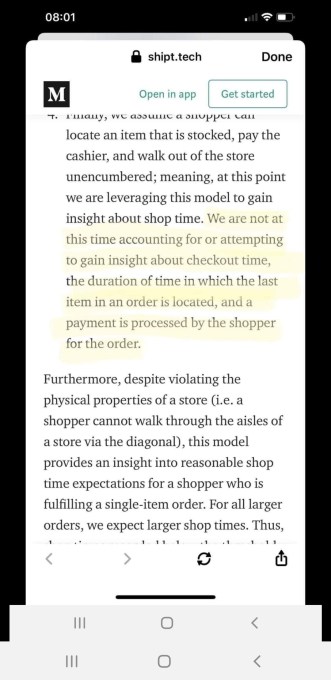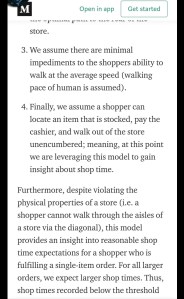Shipt shoppers are organizing a walkout in protest of new pay model
Shipt shoppers are organizing a handful of actions in protest of Shipt’s new pay structure that began rolling out this month. The first action is happening from Saturday, Oct. 17 through Oct. 19, when workers are calling on their fellow Shipt shoppers to walk out and boycott the company. Organizers are asking for shoppers not to schedule any hours or accept any orders during that time.
“Our goal is to draw attention to the fact that this pay scale really does affect shoppers and regardless of Shipt’s position of it taking into account effort and benefitting shoppers, we are finding it is the opposite on both fronts,” Willy Solis, a Shipt shopper in Dallas and lead organizer at Gig Workers Collective, told TechCrunch. “It’s not holding up to the true reality. We are getting paid less for more effort.”
Shipt shoppers also plan to stage a direct action at Target’s corporate headquarters in Minneapolis, Minnesota on Monday, October 19. During the action, shoppers plan to read letters written to Shipt CEO Kelly Caruso that describe how the pay changes have impacted them.
Shipt shoppers have been speaking out against this new pay model since earlier this year, after Shipt started testing this new pay structure. In February, a Shipt shopper from Kalamazoo told me they were losing about 30% or more of their regular pay as a result of the change.
According to Target-owned Shipt, it’s doing this to “better account for the actual effort it takes to complete and deliver orders,” Shipt wrote in the Shipt Shopper Hub. That means the new pay model takes into account estimated drive time from the store to the customer’s door, how many items are in the order, location, peak shopping windows and more. But Shipt isn’t sharing an exact formula for calculating pay because “each metro has unique characteristics that can affect the shopping experience.”
On the blog, Shipt also points to how similarly priced orders might pay differently as a result of the effort it takes. For example, if the order total is $100 but is only one item versus 30 items, the latter order scenario would take more effort. That means the shopper would get paid more for that order with more items. But Solis said that’s an anomaly and that the majority of shoppers don’t receive orders like that.
“To base an entire pay structure off of an anomaly like that is really concerning,” he said.
Meanwhile, Solis said he’s found discrepancies between the way Shipt talks about its formula for calculating pay. In July, Shipt published a blog post about shop time. In it, the company laid out how it thinks about things like the location of the item, size of store and more. In the original post, which has since been updated, Shipt said it did not take into account checkout time, nor was it trying to gain insight about it.

Image Credits: Willy Solis/Screenshot
After shoppers expressed frustration about it in a Facebook group, Solis noticed that Shipt deleted that part from its blog post.

Image Credits: Willy Solis/Screenshot
“They literally said they are not interested in taking into account checkout times, which is a considerable amount of time shoppers spend in stores,” Solis said.
Update 11:30 am PT: Shipt has since said it does take into account waiting and checkout times, the spokesperson said.
“In fact, when a shopper begins shopping an order, that time is logged in our system and we capture the time spent on the order — including the full check out process — all the way through the shopper or driver marking the order delivered,” Snyder said. “We had heard from some readers that the blog post, which was theoretical in nature, was causing confusion. That post was not a description of our current models that estimate shop time and pay, but it was an academic exercise, as the author clearly stated in the opening. But we understand why others may have misunderstood, which is why we made the change.”
Shipt shoppers have staged actions before, but Solis said this one is receiving the most support to date. As part of the call-to-action, Gig Workers Collective is also asking Shipt shoppers to spread the word to at least five other workers they know.
“We are continuing to listen to shopper feedback, but can tell you that we are consistently seeing increasing numbers of shoppers putting themselves on the schedule to shop, accepting, shopping and delivering orders,” Snyder said.
Powered by WPeMatico